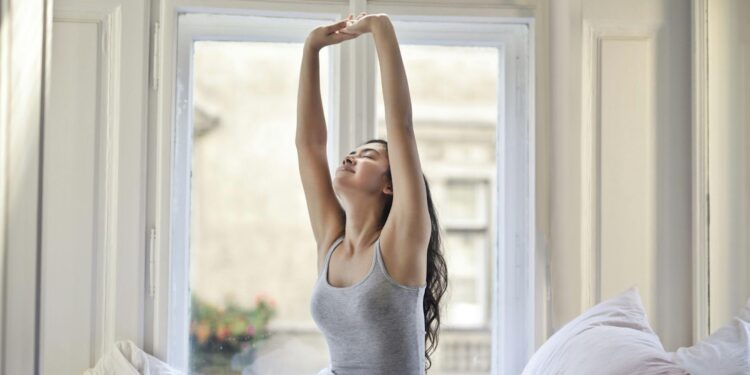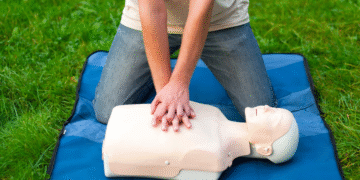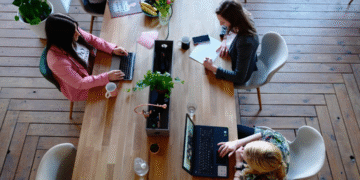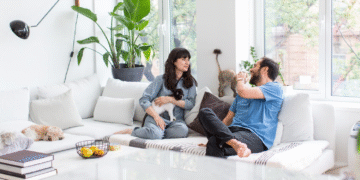Image from Unsplash
You don’t need to overhaul your life or buy fancy equipment to feel energized and grounded at home. A few intentional, daily mini‑routines can transform your mood, sharpen your focus, and build real stamina over time. For inspiration, even browsing spaces styled for movement, like those featured at Indoor Golf Outlet, can spark clever ways to weave energy into everyday living. Let’s look at how to build a simple, balanced routine that anchors your day with calm, connection, and activity.
Why Mini-Routines Make a Big Difference
Modern life often pulls us between screens and chairs, and our bodies pay the price. But short, purposeful practices provide an antidote. Known as micro‑activations, these moments don’t demand hours, they take seconds but deliver energy and mental clarity. Even short bursts of movement help counteract the health risks of sedentary behaviour, contributing to heart health, mood regulation, and overall wellness. Adults benefit greatly from reducing long periods of inactivity and embracing even minimal physical activity.
What’s powerful about these mini‑routines is their accessibility. Anyone, regardless of fitness level or schedule, can introduce simple practices into their day. It’s not about perfection; it’s about presence. And as we pay attention to how we feel in those small moments, we gradually shift how we feel overall.
Crafting Your Three Pillar Mini‑Routine: Calm • Connected • Active
Divide your day into moments that build from inner peace to shared presence to physical movement.
Morning Mindfulness (Calm)
Start your day with a gentle anchor. Take three deep, intentional breaths upon waking. Stretch your arms, neck, and torso while focusing on ease rather than effort. Even just sitting quietly for one minute, simply noticing your breath, can ground you in a calm, deliberate start to the day. This pause sets a psychological tone of readiness for whatever comes next.
Midday Connection (Connected)
This is your time to check in, not just with others, but with yourself. Maybe it’s a thoughtful message to a friend, a quick call to a loved one, or stepping outside and noticing the warmth of the sun or the chill of the air. That reconnection to something real and present breaks the loop of autopilot living. You return to your afternoon not depleted but refreshed, as though you’ve just caught your second wind.
Afternoon Motion (Active)
Movement doesn’t have to mean working out. It might mean a quick walk between rooms, a few squats while the kettle boils, or rolling your shoulders and stretching your spine while standing. Small motions, done often, reinforce a sense of alertness. They also help digestion, focus, and can lift the brain fog that often arrives mid-afternoon.
How to Build Consistent Mini‑Habits
Image from Unsplash
Consistency is more important than intensity. A little goes a long way, especially when it fits naturally into what you’re already doing.
Set reminders on your phone, place sticky notes near your desk, or tie actions to habits you already have. After brushing your teeth? Try five deep breaths. Just fed the dog? Take a 30-second standing stretch. These little tethers keep you honest and prevent the day from sweeping you away.
Make it enjoyable. Maybe your stretch routine includes your favorite song. Or you sip tea while doing gentle ankle rolls. Keep tools you love close by, a soft mat, a calming scent, or a clear space that invites movement. Even visuals of functional spaces from places like Indoor Golf Outlet can nudge you toward active living without even realizing it.
And remember: it’s not about discipline, it’s about rhythm. When movement, calm, and connection become part of the day’s fabric, they stop being to-do items and start becoming something like muscle memory.
Scaling Up: Seasons of Routine
Think of your routine like the seasons, always in motion, and yet anchored in predictable patterns. During the workweek, you might stick to shorter, scheduled moments. On weekends, give yourself time to stretch out, take longer walks, unplug from screens, and reconnect with your senses. And when you’re tired, allow rest to lead. On recovery days, light stretching or intentional stillness is still part of the routine.
This ebb and flow keeps the process sustainable. You’re not starting over, you’re adapting. The energy you gain from a gentle stretch or focused breath on a quiet day builds just as much strength as an intense workout. It’s about maintaining your relationship with movement and presence, even when your circumstances shift.
Small Tech, Big Impact
Technology, when used intentionally, can offer gentle guidance. Smartwatches that nudge you to stand or breathe can be helpful. But it doesn’t stop there. A corner of your home can become a sanctuary with a soft mat, an open window, or even a single chair dedicated to mindful movement.
Sometimes just browsing thoughtfully designed activity setups, like the practical, inspiring layouts found at Indoor Golf Outlet, can plant ideas for creating your own small, functional wellness space at home.
Even something as basic as your phone’s wallpaper, showing a photo of nature or a quote that reminds you to move, can shift your mindset. It’s not about the gadget; it’s about how the gadget supports your intention.
The Body Responds to Care
Our bodies aren’t built to run on burnout. They thrive with small, consistent acts of care. Whether it’s five minutes of sunlight, stretching your spine, or mindfully sipping water, the cumulative effect of attention is extraordinary.
According to the U.S. Centers for Disease Control and Prevention, even brief, consistent periods of movement each day can dramatically lower the risk of chronic disease and improve mental health. It’s not about chasing perfection, it’s about creating patterns of well-being, rooted in simplicity.
When your environment supports your wellness, you naturally begin to respond in kind. Your home becomes your co-conspirator in self-care, not just a backdrop to your busy life.
Creating an ideal mini‑routine means embracing the small moments: mindful breath, felt steps, silent cues. These are tiny investments that produce real gains across physical, mental, and emotional health.
So begin with a quiet breath. Move. Connect. Repeat. Over time, your routine becomes your rhythm, and your home becomes not just a space to live in, but one that supports feeling alert, centred, and wonderfully alive.













